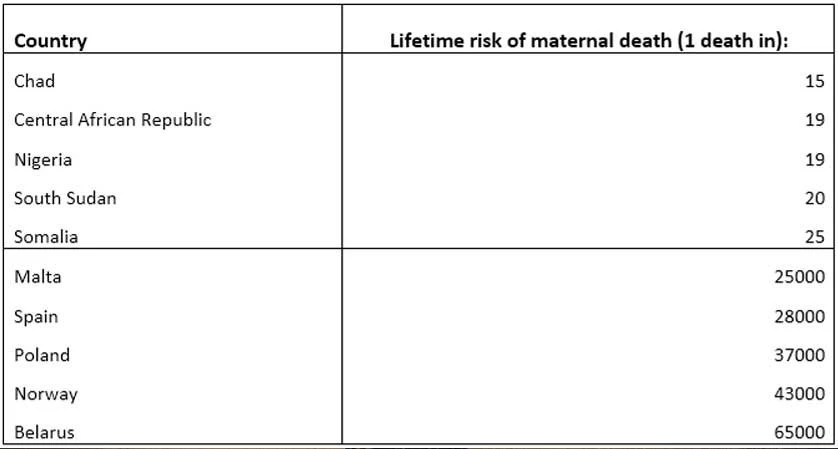
This blog is based on new maternal mortality estimates and a report released today by the United Nations Maternal Mortality Estimation Inter-Agency Group (UN MMEIG).
Every two minutes, a woman dies from pregnancy-related causes, either during pregnancy, childbirth or postpartum. These new findings show that progress in maternal mortality has slowed, putting countries off track to achieve the Sustainable Development Goals (SDGs) by 2030.
The new report, which reflects the first trends in maternal mortality estimates within the SDG reporting period, shows that an estimated 287,000 women died in 2020 globally due to complications associated with pregnancy and childbirth. This represents only a minor decrease from 309,000 maternal deaths in 2016 when the SDGs became effective.
SDG 3.1 is to reduce the global Maternal Mortality Ratio (MMR) to less than 70 maternal deaths per 100,000 live births by 2030. The global MMR in 2020 was estimated at 223 maternal deaths per 100,000 live births, down from 227 in 2015 and from 339 in 2000. During the Millennium Development Goal era from 2000 to 2015, the global annual rate of reduction was 2.7%, but this fell to negligible levels during the first five years of the SDG era from 2016 to 2020.
Globally, the MMR dropped by 34% between 2000 and 2020, and maternal deaths either increased or stagnated in most regions between 2016 and 2020
Stark inequities across regions continue
Over 99% of maternal deaths in 2020 occur in low- and middle-income countries where the majority (72%) occur in Sub-Saharan Africa with another 16% in South Asia. These deaths are largely concentrated in the world’s poorest countries including fragile and conflict-affected states. This is due to multiple factors including high fertility rates as well as lack of access to quality healthcare among the most vulnerable communities.
Countries with the highest and lowest lifetime risk of maternal deaths, 2020
While more data will be needed, the COVID-19 pandemic is likely to have further exacerbated inequalities in access to essential healthcare during pregnancy and childbirth and may have further held back progress in improving maternal health. At current rates of progress, the world will fall short of the global SDG target for 2030 for reducing maternal deaths by more than 1 million lives.
Investing in equitable health systems is critical
The UN MMEIG report urges collective action to address health system issues that impede access to safe, quality, respectful and affordable pregnancy care and sexual and reproductive health and rights for all women and girls.
Community-centered primary health care can enable equitable access to critical services such as assisted births and pre- and postnatal care, and family planning, especially for women and girls in hard-to-reach communities. The World Bank and the Global Financing Facility (GFF) have been supporting countries to build primary healthcare systems that meet the needs of women, children, and adolescents, with a concerted effort to reduce preventable deaths.
The report concludes that there is still time to mobilize and invigorate global-, regional-, national-, and community-level commitments to improving maternal health, including to end preventable maternal mortality, and to ensure women can not only survive pregnancy but can also live healthy, productive lives.
These maternal mortality estimates were produced by the UN MMEIG. The UN MMEIG includes the World Health Organization (WHO), United Nations Children’s Fund (UNICEF), the United Nations Population Fund (UNFPA), the World Bank Group, and the United Nations Department of Economic and Social Affairs, Population Division (UNPD). The group was formed in 2006 to harmonize and improve estimation and modeling methods across United Nations agencies, and to report on progress toward the MDGs. The estimates for 2000-2020 presented in the latest report are the 10th in a series of analyses to examine global, regional, and country progress in reducing maternal mortality. The estimates in the latest report supersede all earlier estimates. The group continues to produce reliable and transparent maternal mortality estimates to track countries’ progress towards SDG target 3.1. The new estimates will become available in the World Bank’s World Development Indicators and Health databases.





Join the Conversation